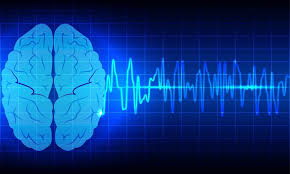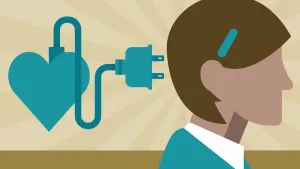Emotion and technology
Affective computing is a term that refers to the synergy between AI and psychology in order to understand and affect emotions. Another term for it could be emotional AI. It is a niche within AI that is not very popular, but I really believe it is going to become increase in popularity in the near future.
Until very recently, machine learning did not have many things to say about psychology. We, of course, had sentiment analysis but that’s that. In the last few years some companies tried to combine psychometrics with machine learning, in order to create improved psychometric questionnaires. However, I really believe that the advancements in affective computing and, what is now called mindless AI, are what is going to cause a potential paradigm shift.

Affective computing was created as a term in the MIT Media Lab. Mindless computing was created as a term in Cornell University. The objective is the integration of human emotion, AI and psychology to improve any number of outcomes, from understanding our emotions better to improving communication with machines, as well as between us.
The powerful idea behind mindless computing is that smart devices will affect our behaviour subconsciously. How is this possible? There is lots of research on “entrainment”, the concept that through the use of frequencies we can control brainwaves, heart rate and respiration.
Brainwave entraiment is probably the most popular application of entrainment. Through the use of sound frequences, such as monaural or binaural beats, it is possible to force the brain to tune in a specific frequency. So, for example, if you are meditating, you might want to use frequencies that force your brain to tune in theta waves.
Emotion and machine learning
Technology is moving forward in the integration of wearable sensors, and emotion recognition. For example, MyFeel has created a wearable device that is described as the “world’s first emotion sensor & mental health advisor”. Their wristband uses different sensors, including skin conductance, heart rate and skin temperature, in order to collect data which is then fed into an AI algorithm that can infer the user’s emotional state.

LimbicAI is another company in that company with the mission to merge neuroscience, emotion and technology. They provide an SDK for stress recognition in apps. In order to do that, they utilise Apple Watch’s heart rate monitor.
Pip is another device that can detect stress levels by using a special device on your fingertip. It does this by detecting variations in your electrodermal activity. You can then visualise this on a dashboard and become more aware of how different life events affect your stress levels and well-being.

Servicing affective computing
While recording all this information, such as heart rate, or stress levels, is very useful, what is even more powerful is the potential that these technologies unlock in communicating with ourselves and others. Through the use of intelligent assistant’s like Amazon’s Alexa, chatbots, smartphones, even robots, we will be able to receive feedback on our behaviour, become more mindful, and take actions to improve our well-being.
What is very important is that for the first time we can record information at a very granular level. So, we can measure effects, and outcomes directly. Whereas in the past, the servicing of mental health took place through professionals, and was based on someone’s self-reporting, we can know add a great degree of objectivity, make it more personal (through the use of recommender systems), and more easily service large parts of the population, even those that do not find it easy to access mental health services.
It is clear that progress in this area will move faster and faster, and we can only guess at some of the amazing products we will be seeing coming out in the next few years. We can see one hint at this direction from Within[U].ai. I have been personally involved in building this product whose goal is to integrate all the aforementioned product ideas and go much further. So far the page is a bit cryptic, but as you will read, Within[U] aims to build a complete map of human consciousness, and then put this inside a machine. Why would someone want to do that (other than the coolness factor?). This is the best to increase mindfulness of ourselves, and emotions, so the applications are countless. Feel free to get in touch if you want to know more (as currently the project is in stealth mode).
Do you want to become data scientist?

Do you want to become a data scientist and pursue a lucrative career with a high salary, working from anywhere in the world? I have developed a unique course based on my 10+ years of teaching experience in this area. The course offers the following:
- Learn all the basics of data science (value $10k+)
- Get premium mentoring (value at $1k/hour)
- We apply to jobs for you and we help you land a job, by preparing you for interviews (value at $50k+ per year)
- We provide a satisfaction guarantee!
If you want to learn more book a call with my team now or get in touch.

